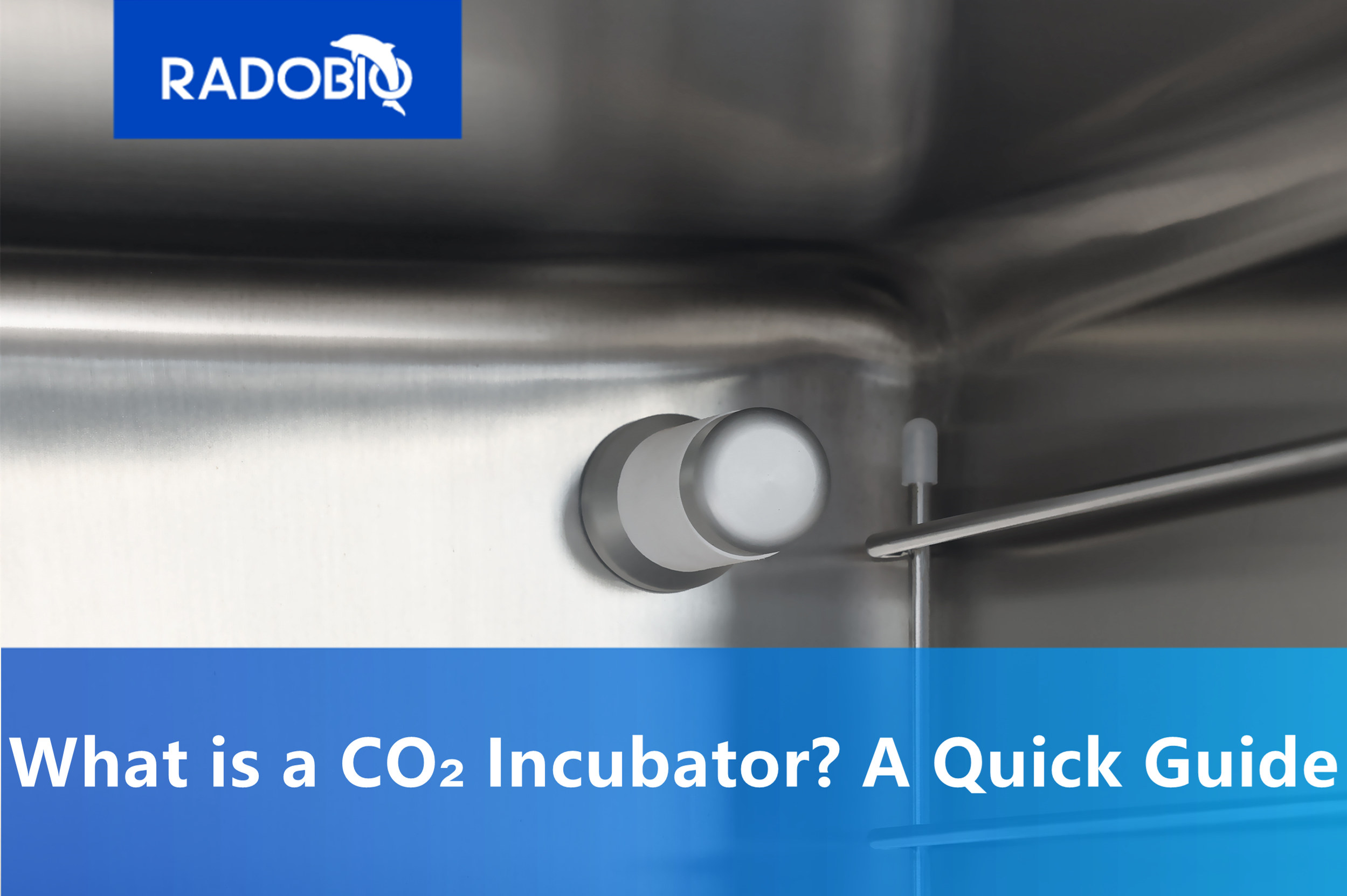What is a CO₂ Incubator? A Quick Guide
While widely used in life sciences, CO₂ incubator functions remain unfamiliar to many. This guide demystifies their purpose, workings, and applications—whether you’re in a cell biology lab, pharmaceutical facility, or medical research center.
What is a CO₂ Incubator?
A CO₂ incubator is an environmental chamber that simulates in vivo conditions for cell and tissue culture by precisely controlling:
- ▸ Temperature (typically 37°C for mammalian cells)
▸ Humidity (up to 95% to prevent media evaporation)
▸ CO₂ percentage (usually 5% to stabilize pH via bicarbonate buffering)
Unlike standard incubators, it maintains a sterile, gas-regulated environment critical for sensitive biological processes .
How Does a CO₂ Incubator Work?
Key systems work in tandem:
-
1.Temperature Control
-
▸ Heating methods:
-
a. Air-jacketed: Rapid heating via embedded heaters (ideal for frequent access) .
-
b. Water-jacketed: Superior thermal stability (optimal for long-term cultures) .
-
c. 6 side direct heated. Rapid heating and good temperature uniformity (ideal for frequent access and sensitive cell culture)
-
-
▸ PID controllers ensure ±0.1°C accuracy .
-
-
2.CO₂ Regulation
-
▸ Infrared sensors monitor CO₂ levels, adjusting gas inflow from cylinders to maintain 5% concentration .
-
▸ Prevents pH drift in culture media (critical for cell viability) .
-
-
3.Humidity Management
-
▸ A water pan or humidifier can increase the humidity to 95%
-
-
4.Contamination Prevention
-
▸ HEPA filters purify incoming air (99.97% efficiency for ≥0.3µm particles) .
-
▸ 140°C or 180°C high-heat sterilization cycles eliminate microbes between runs .
-
Key Applications
CO₂ incubators enable breakthroughs across fields:
-
▸ Cell Culture
-
Growing cancer lines (e.g., HeLa), stem cells, and primary cultures for drug testing .
-
▸ Reproductive Medicine
-
Embryo cultivation in IVF clinics, often with multi-gas (O₂/N₂/CO₂) systems .
-
▸ Microbiology & Virology
-
Pathogen propagation and vaccine development .
-
▸ Tissue Engineering
-
3D bioprinting and organoid maturation .
-
▸ Industrial Biotechnology
- Bioreactor seeding and monoclonal antibody production .
Safety & Maintenance Essentials
-
▸ CO₂ Leak Risks
-
Percentage >0.5% cause health hazards; install detectors and ensure ventilation .
-
▸ Routine Protocols
-
Daily: Check CO₂ tank levels.
-
Weekly: Refill water pan with distilled water.
-
Quarterly: Run sterilization cycle, disinfect the interior of the incubator.
-
Yearly: Replace HEPA filter, verify and document CO2, humidity and temperature calibration
-
Choosing a CO₂ Incubator: Radobio Solutions
Radobio offers multi-models incubators for diverse needs:
|
Model Type
|
Best For
|
Key Features
|
|
6 side direct heated.
|
High-throughput labs
|
Fast recovery after door opening, lightweight
|
|
Fanless Design
|
Sensitive cell cultures (e.g., stem cells)
|
No turbulence or vibration, minimal evaporation of cell culture medium
|
|
Multi-Gas
|
Hypoxic studies (e.g., cancer research)
|
O₂ control (1–20%) . data logging
|
|
With Copper Chamber
|
Experiments sensitive to bacterial contamination
|
Effectively inhibits bacterial growth
|
|
GMP-Compliant
|
Pharma/biotech production
|
21 CFR Part 11, audit trails, remote monitoring
|
Explore Radobio’s CO₂ incubator range: Radobio Product List
Why Precision Matters?
A 0.1°C temperature shift or 0.1% CO₂ fluctuation can alter gene expression in sensitive cultures . Radobio’s triple-sensor feedback and microprocessor control achieve deviations of just ±0.1°C and ±0.1% CO₂—ensuring reproducible science .
Innovation Spotlight: New Radobio models integrate IoT connectivity for real-time environmental alerts and predictive maintenance.
For protocol optimization or custom applications, contact Radobio’s technical team.
Post time: Aug-04-2025




